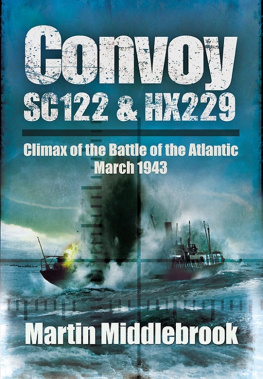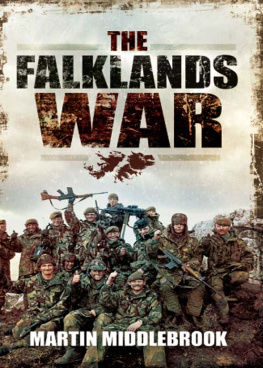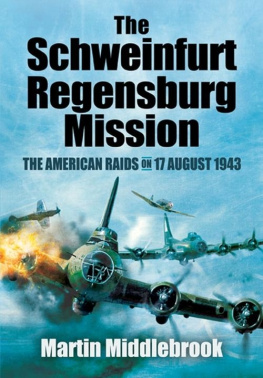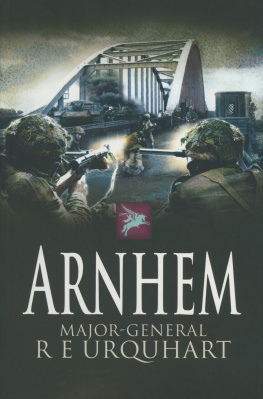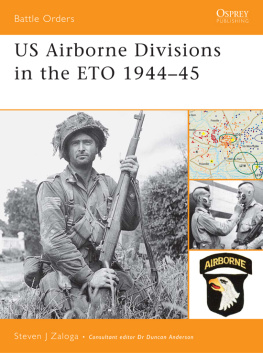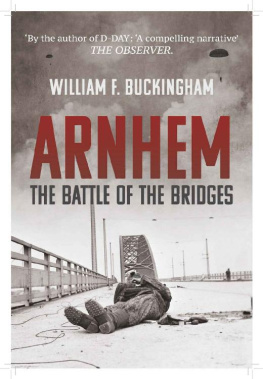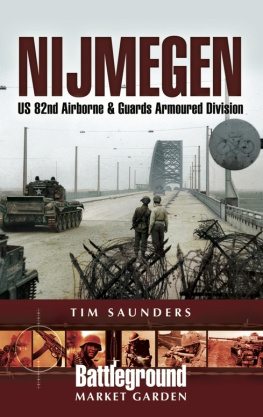Other books by Martin Middlebrook
The First Day on the Somme
The Nremburg Raid
Convoy
The Sinking of the Prince of Wales and Repulse
(with Patrick Mahoney)
The Kaiser's Battle
The Battle of Hamburg
The Peenemnde Raid
The Schweinfurt-Regensburg Mission
The Bomber Command War Diaries (with Chris Everitt)
The Falklands War
The Berlin Raids
The Argentine Fight for the Falklands
Your Country Needs You
The North Midland Territorials Go To War
The Middlebrook Guide to the Somme Battlefields
(with Mary Middlebrook)
The Bruckshaw Diaries (ed.)
Everlasting Arms (ed.)
denotes titles in print with Pen & Sword Books Ltd
First published by Viking, 1994
Reprinted in this format by
Pen & Sword Military
an imprint of
Pen & Sword Books Ltd
47 Church Street
Barnsley
South Yorkshire S70 2AS
Copyright Martin Middlebrook, 1994, 2009
ISBN 978 1 84884 075 1
ISBN 9781844686322 (epub)
ISBN 9781844686339 (prc)
The right of Martin Middlebrook to be identified as
author of this work has been asserted by him in accordance
with the Copyright, Designs and Patents Act 1988
A CIP catalogue record for this book is
available from the British Library
All rights reserved. No part of this book may be reproduced or transmitted
in any form or by any means, electronic or mechanical including
photocopying, recording or by any information storage and retrieval
system, without permission from the Publisher in writing.
Printed and bound in England
by CPI
Pen & Sword Books Ltd incorporates the imprints of
Pen & Sword Aviation, Pen & Sword Maritime, Pen & Sword Military,
Wharncliffe Local History, Pen & Sword Select,
Pen & Sword Military Classics and Leo Cooper,
Remember When, Seaforth Publishing and Frontline Publishing
For a complete list of Pen & Sword titles please contact
PEN & SWORD BOOKS LIMITED
47 Church Street, Barnsley, South Yorkshire, S70 2AS, England
E-mail:
Website: www.pen-and-sword.co.uk
Contents
Photographs
The author and publishers are grateful to the following for permission to reproduce photographs:
Imperial War Museum .
Bundesarchiv .
Charles Bates .
Col Paddy de Burgh .
KLM Luchtfotographie .
Len Wright .
Mrs Kremer .
The Polish Institute and Sikorski Museum .
Commonwealth War Graves Commission .
Photographs were taken by the author.
Maps
Maps by Reginald and Marjorie Piggott from preliminary drawings by Mary Middlebrook
Introduction
Arnhem it was the last major battle lost by the British Army, lost not by the men who fought there but by the overconfidence of generals, faulty planning and the failure of a relieving force given too great a task. If the operation of which Arnhem formed a part had been successful, the outcome of the war and the history of post-war Europe would have been greatly altered. Yet is it worth another book? I had fulfilled all my literary ambitions by researching and writing thirteen full-length books and was ready to retire from that laborious craft when Peter van Gorsel, head of Penguin's Dutch office, asked me to write a book on Arnhem for the fiftieth anniversary in 1994. It was the first time that my publishers had requested a book; all previous subjects had been my choice. I eventually agreed for several reasons. I had not previously researched and written about the British Army in the Second World War and had not previously done any work in Holland; so two fresh fields were opened up to me. I also felt that the fighting in and around Arnhem had still not been described in the detail that it merited.
The preparations have followed my standard procedure. First was the study of prime source documents, not always complete in this case because so few men returned from the battle to write up unit war diaries. But the Airborne Forces Museum at Aldershot has a bulging archive of Arnhem reports built up over the years, and I was most fortunate in being allowed to take home the entire collection for a careful study. Similarly, Dr Adrian Groeneweg and the Airborne Museum at Oosterbeek have also been most diligent in providing help. In addition, I have benefited from the research which several members of the post-war generation in Britain and Holland have carried out; these will be acknowledged in due course but I must mention Jan Hey, a Dutchman who analysed the registers of the Commonwealth War Graves Commission to produce which lists the fatal casualties by units. The War Graves Commission registers are freely available for such research, but Jan Hey has added the invaluable information of the original field burial locations before the remains were concentrated into post-war cemeteries.
I then set out to contact as many men as possible who had taken part in the battle always the most interesting part of my work. A total of 501 men eventually provided their contributions, 156 by personal interview, the remainder by correspondence. Some of the men were regular contributors to Arnhem authors, and their names appear in other books, but hundreds of men have never told their stories, and much new material became available. One man in New Zealand spent eleven days preparing a detailed map and twenty-eight pages of laboriously handwritten notes. Another man who was an officer at Arnhem stressed, with his notes: Here rests no hero but the remains of a once young man who was scared out of his wits at the violence and ferocity of dirty little battles in dirty little corners of which the world knew nothing nor ever will.
A visit to Holland proved most rewarding. I needed to study the ground where the troops landed and on which actions were fought; fortunately, most of the locations are little changed except for the road-bridge area in Arnhem. I was also able to interview some of the Dutch people who were involved in 1944; I will never forget the help and hospitality shown to me by these people. I would normally have travelled to Germany to talk to the German soldiers but did not do so for practical reasons. A new book became available while I was carrying out my research, written by Robert Kershaw, a serving officer of the Parachute Regiment who was attached to the German Army for three years during which he researched and wrote up Operation Market Garden from the German side. There was no way that I could improve on this new work, and I will devote most of my book to fresh material from the British and Dutch sides.
The subject of the book is clear all aspects of the fighting in and around Arnhem but not of the wider Operation Market Garden. The units involved will be the 1st British Airborne Division, the 1st Polish Independent Parachute Brigade Group, and the glider pilot, RAF and USAAF squadrons which carried the airborne men to Holland and, in the case of the RAF, then suffered so grievously in attempting to succour them by dropping supplies. The only ground troops who will be invited to this airborne party will be the 4th Dorsets, who crossed the Rhine towards the end of the battle, and the British and Canadian Royal Engineers, who evacuated the airborne survivors across the river. The geographical area of the battle will be that part of Holland around the communities of Arnhem, Oosterbeek, Wolfheze, Renkum and Driel.
There are no major mysteries or dramatic disclosures about Arnhem I am not a revisionist historian and the strategic background will be set in as brief a manner as possible so that I can devote maximum space to a description of the units which went to Arnhem and of the actual fighting. My main intention will be to describe the action in as much detail as possible and with the correct balance. Brave as it was, the oft told story of the holding of the area around the Arnhem road bridge by the 2nd Parachute Battalion and by other troops is too often highlighted to the detriment of other aspects of the battle.
Next page

